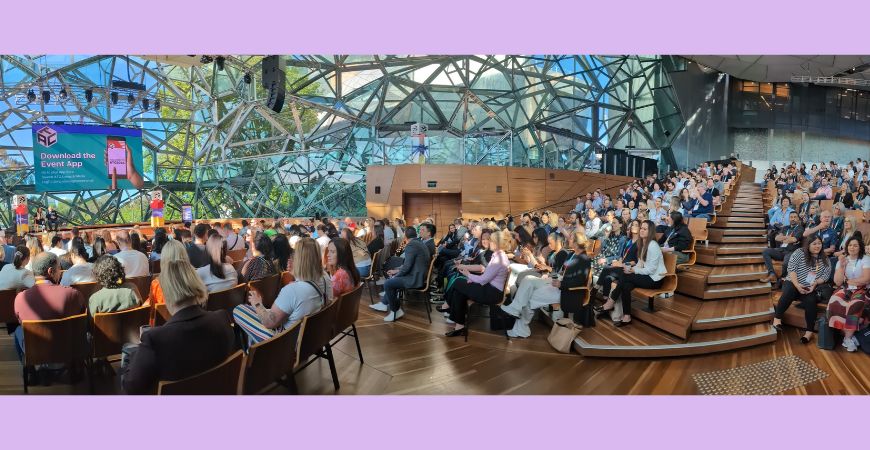The mere-exposure effect refers to the psychological phenomenon in which people tend to develop a preference for things simply because they are familiar with them.
Strong leaders are aware of the value that frequent exposure to different beliefs, cultures, challenges and priorities deliver to their business. It’s why organisations source from global talent networks, tackle unconscious bias and employment inequity, and implement systems that enable continuous feedback.
This exposure is challenging, requiring emotional intelligence, resilience, and vulnerability. However, by getting comfortable with being uncomfortable, incredible growth is possible – both for your organisation and the people within it.
Here are my thoughts on the power of exposure in developing forward-thinking organisations with the ability to truly thrive in the new world of work.
The next generation of leaders
The talent-supply mismatch is a concern for organisations of all sizes, across all industries.
Sourcing future visionaries will be the first (and rather sizeable) challenge. Retaining and developing them will require an entirely different set of solutions, in which the exposure effect can play an important role.
Flatten your structure: By removing layers of hierarchy, you not only create a more agile organisation, but you allow people to expose themselves to new and challenging situations on a regular basis. Seeing a greater cross-section of the business allows individuals to deepen their understanding of how you operate, the challenges you face and the problems that concern your customers.
Equipped with this knowledge, they can collaborate as part of high-functioning teams to solve these issues – perhaps in ways you hadn’t considered before.
And it’s in these teams that you’ll find your next generation of leaders: those that respond proactively to change, seek out answers to difficult questions and bring others along on this journey.
Push boundaries: So called ‘soft-skills’, including problem-solving and persuasion, are hallmarks of great leaders. While the education system prepares the next generation with many of the technical skills they need to succeed, organisations play a key role in bridging the gap in our capabilities for communication and collaboration.
It is not without risk, but leaders must start making bets on younger people who show these capabilities in the early stages of their career. Having individuals contribute, or even lead, key strategic discussions – in which they must work across the company to understand, develop and present solutions to senior management – offers an enormous level of exposure that some may not experience until much later in their career.
Not only does this promote a greater level of diversity within the organisation, but it also showcases your commitment to rising talent – and offers them an incentive to stay.
I’ve witnessed the power of this exposure. We recently challenged a young Project Manager to lead a number of Global Steering Commitment Calls on some of our key change initiatives. Simply by exposing them to frequent interactions with senior decision makers (who from experience, I know aren’t shy when it comes to sharing their opinion), you can visibly see their personal and professional growth taking place.
An exposed leader is an engaged leader
Leaders are tasked with creating a vision for the organisation. This is often what I refer to as the 30,000-foot view – which is then disseminated throughout the business.
At every touchpoint, teams should be encouraged to come up with their idea of how – and if – that vision works in practice.
Build your feedback loops: Good employees will deliver your ideas. Great employees go a step further and consider how their role in their organisation can help to refine your vision and allow you to get even closer to customer needs.
As a leader, how you find time to expose yourself to this feedback will be critical in maintaining customer-centricity. Pulse surveys offer regular insights into how our teams feel we are achieving our goals. The quantitative data these feedback loops deliver is invaluable, but I’m also a huge advocate of balancing this with open and honest conversation.
I learn something from every single member of the Talent Solutions team, from the most senior board member to our newest recruits. By regularly ‘touching base’ with a range of individuals, I can take onboard their feedback, rethink my strategy and realign our vision.
We are a people-focused organisation, so it’s only right that we keep people at the core of everything we do.
From control to coach: It’s not always easy to relinquish control. But a shift from the command-and-control style of leadership is well underway and progressive leaders acknowledge the value of partnerships over power.
Exposing yourself to different ways of thinking often leads to better solutions in the long term. After all, no single person can possibly have all the answers.
You’ll need to expose yourself to topics that stretch you – from your processes to your challenges and maybe even your current failures. If you’ve got a well-articulated vision and a purpose for where you’re going, then this will make exposure easier. The feedback that people offer is simply helping you to get closer to achieving your vision.
While we aren’t all hard-wired for empathy, adaptability or criticism, we can leverage self-awareness to recognise this and surround ourselves with people who are more adept in these areas. We’ve already witnessed the impact of those leaders who fail to do so, shut off from their teams and pursuing a vision that becomes disjointed and widely unpopular.
The next challenge for leaders will be how to maintain the exposure effect.
I’ve gone from spending vast amounts of time in our offices around the globe to working predominantly from an office at the bottom of my garden. In an increasingly virtual world of work, how do we ensure we continue to expose ourselves to new or challenging ways of thinking?





























